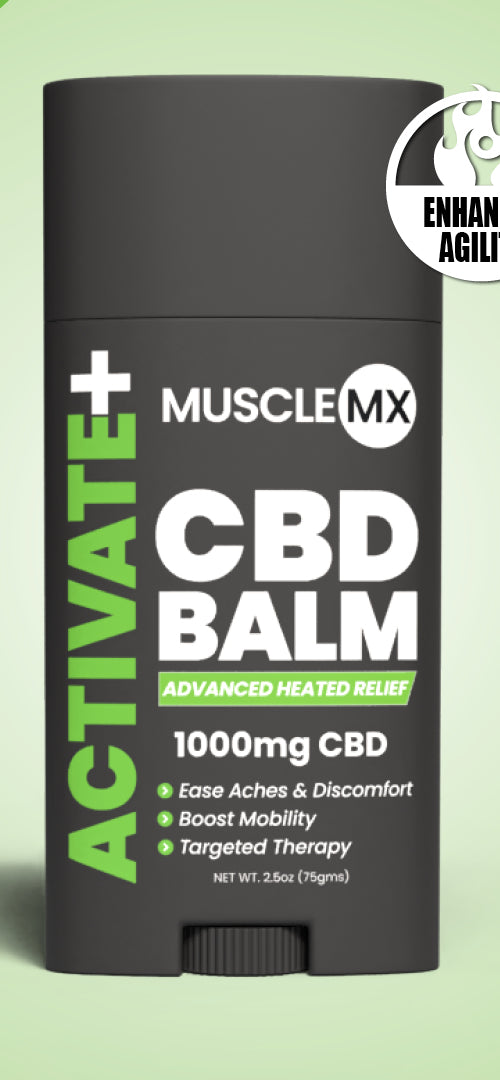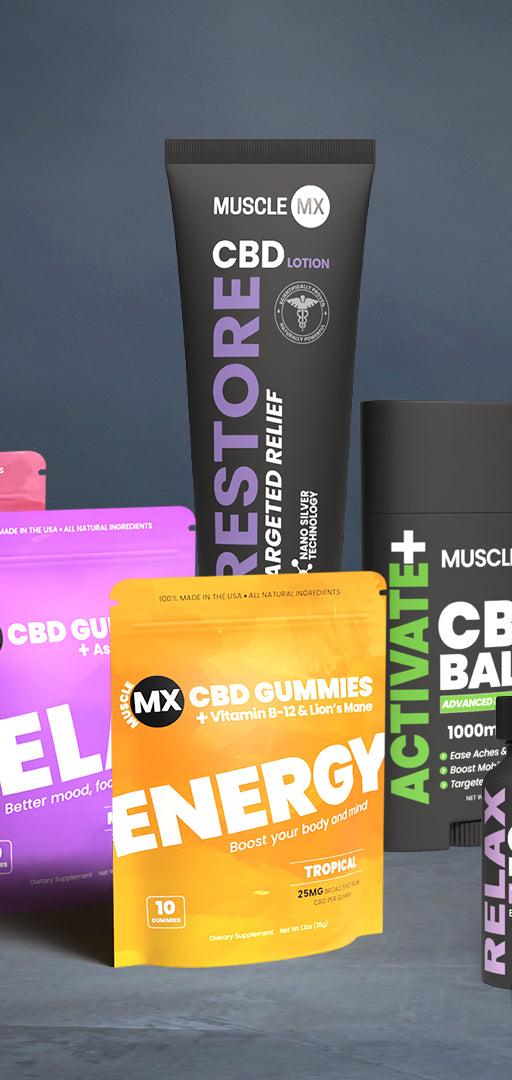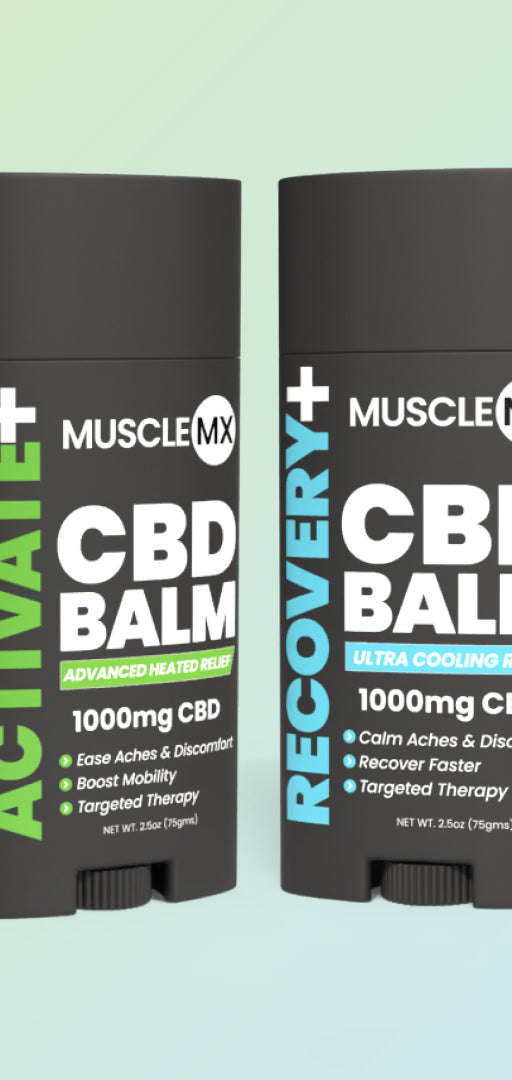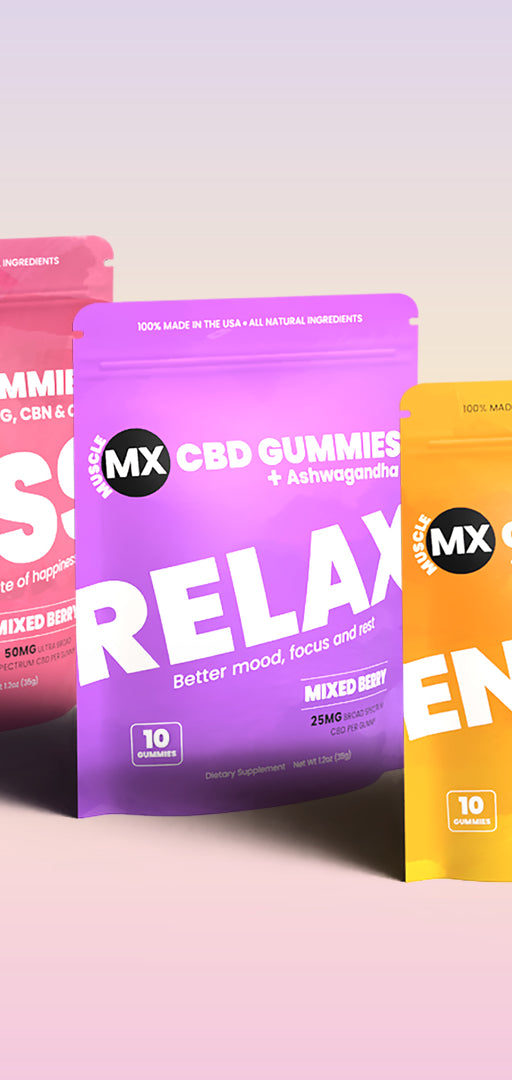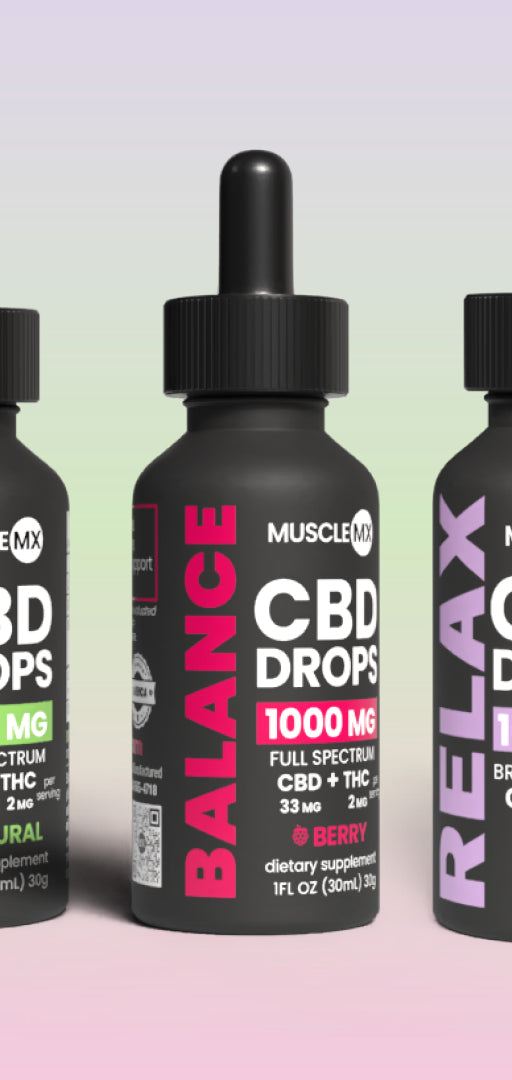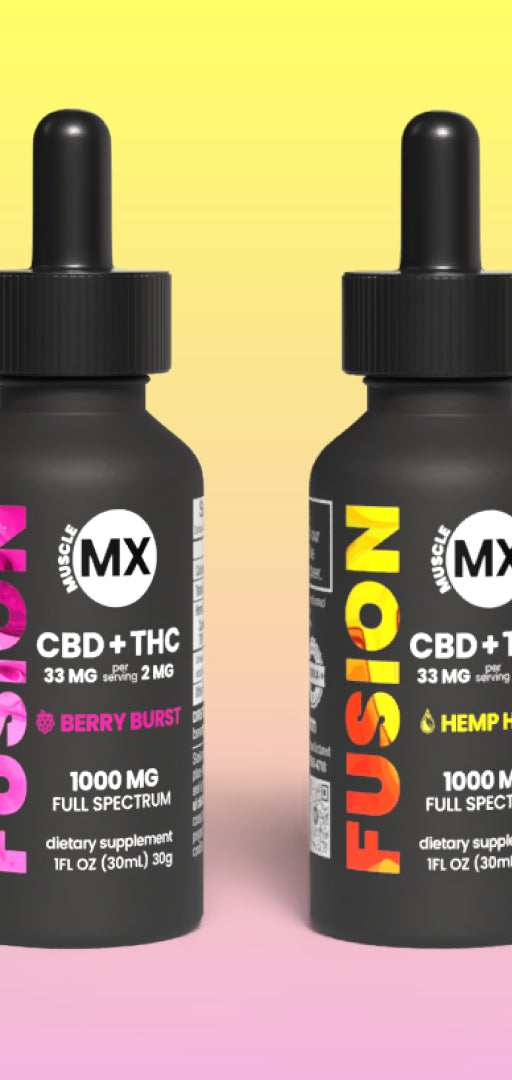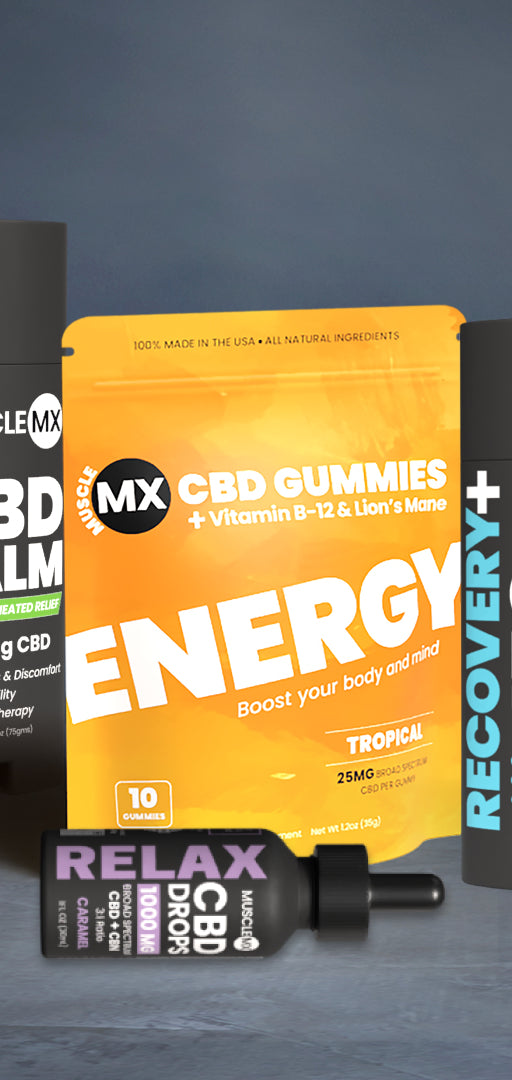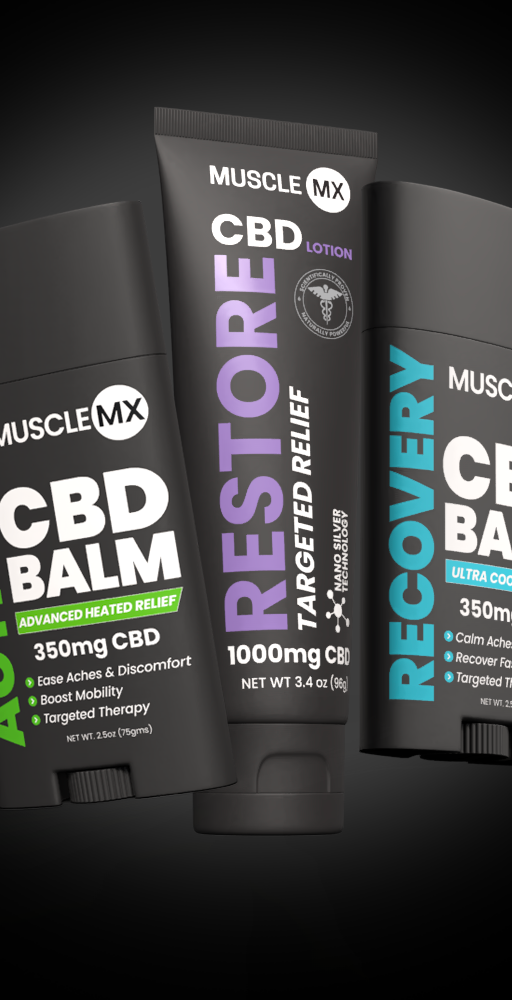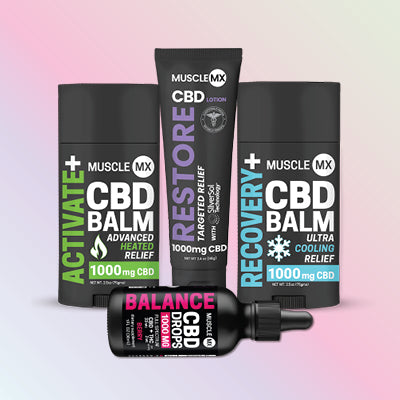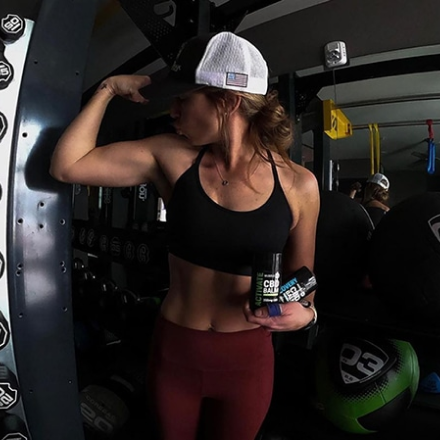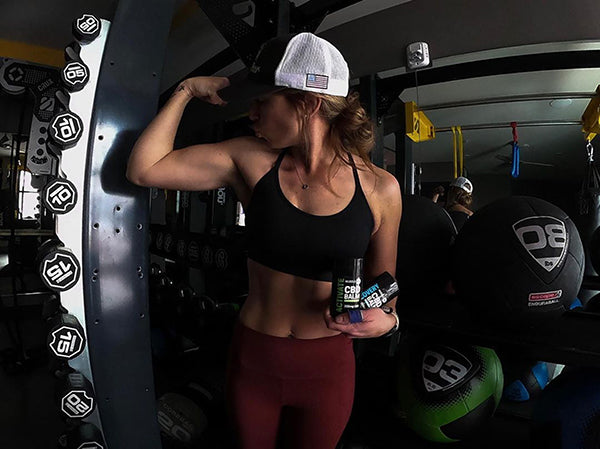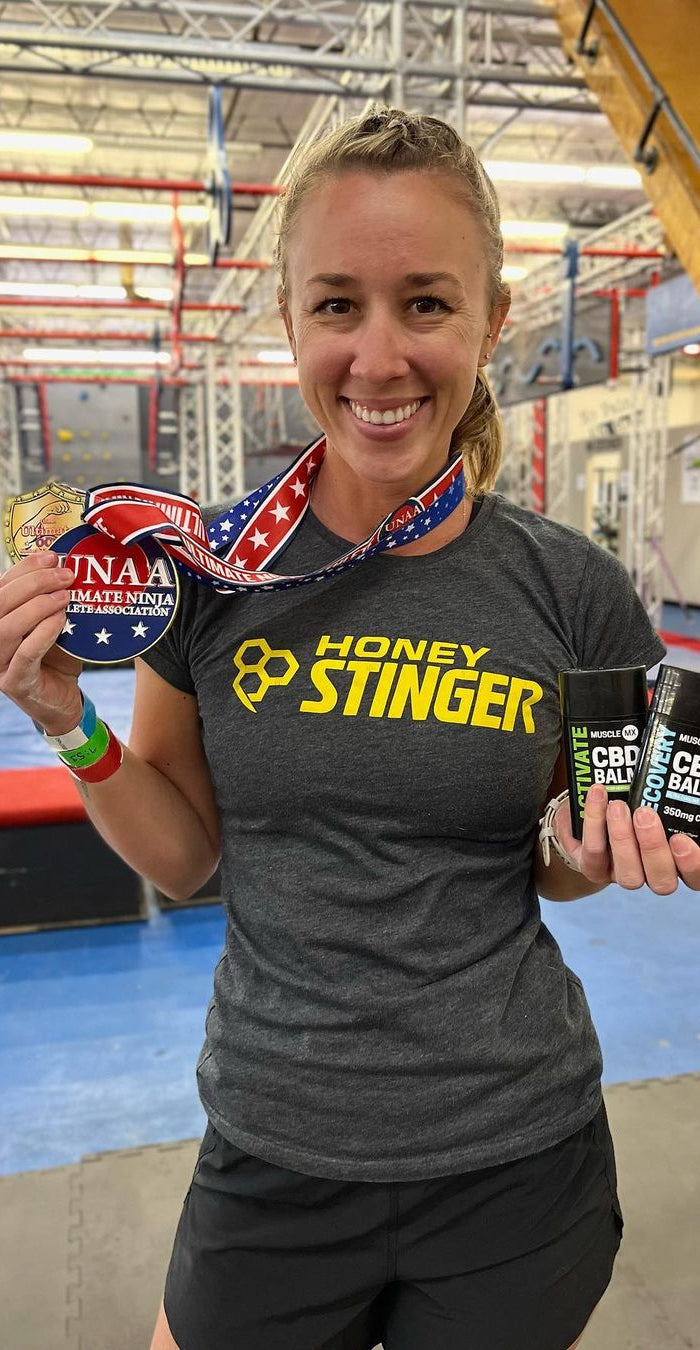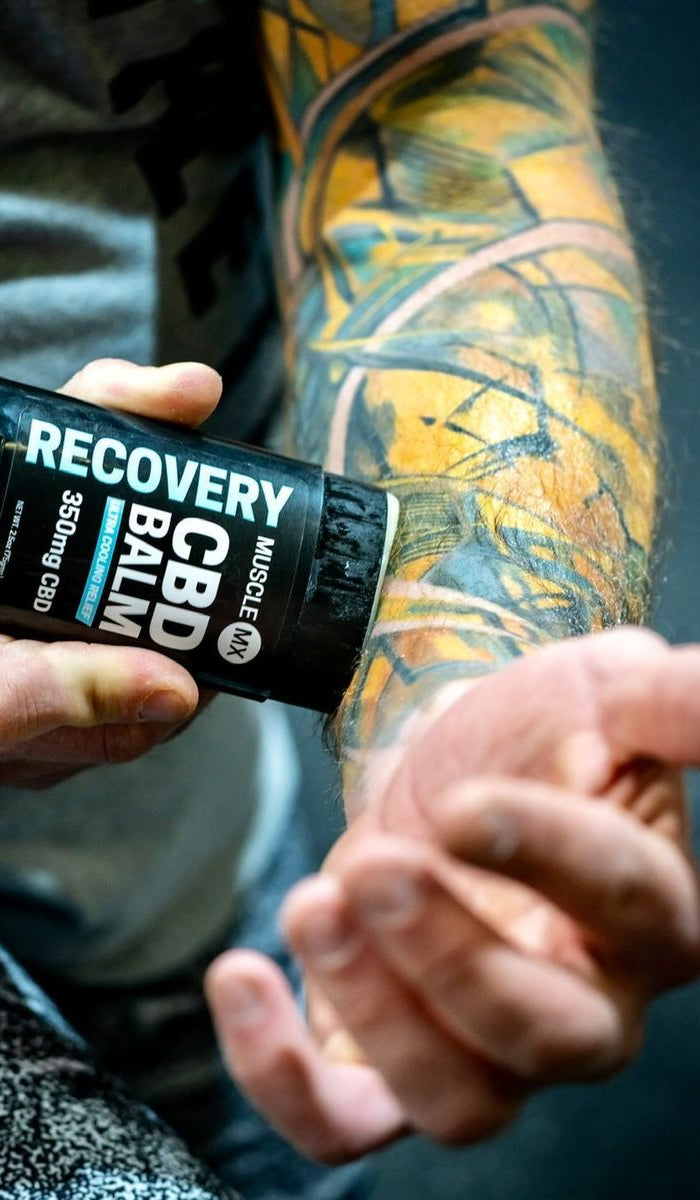How to Help Sore Legs After Leg Day: A Trainer's Guide to Quick Relief
Leg day soreness — that familiar ache that makes climbing stairs feel like scaling a mountain and sitting down a dreaded challenge. If you've ever winced with each step the day after a challenging squat session, you're experiencing what fitness experts call delayed onset muscle soreness, or DOMS. This discomfort typically starts 12 to 24 hours after your workout and often peaks between one and three days later.
Have you ever wondered why this soreness affects everyone, regardless of fitness level? It's particularly noticeable when you increase your workout intensity or duration, but even seasoned athletes aren't immune to post-leg day discomfort.
Here's something important to remember: that soreness is actually a positive sign. It indicates your muscles are responding to your workout and adapting to become stronger. Those tiny microscopic tears in your muscle fibers are a necessary part of the muscle growth and strength development process. However, understanding the cause doesn't mean you need to suffer through the recovery period.
Let's explore effective ways to help your legs recover after an intense workout. From foam rolling techniques to nutrition strategies and proper hydration (including drinking water throughout your exercise session), we'll cover proven methods to ease muscle soreness. Whether you're new to the post-squat struggle or looking for fresh approaches to muscle recovery, these strategies will help you return to comfortable movement sooner.
What Causes Leg Soreness After Leg Day
Leg day soreness — it's a familiar discomfort that many fitness enthusiasts experience. But what's actually happening beneath the surface when that post-squat session ache sets in? Understanding the science behind your soreness is the first step toward finding effective relief. Let's examine what occurs in your muscles when that post-workout discomfort develops.
Microscopic Muscle Tears and Inflammation
When you challenge your legs with demanding exercises, especially those involving eccentric contractions (where the muscle lengthens under tension, like lowering into a squat), you create tiny microtears in your muscle fibers. These microscopic tears don't just happen randomly — they occur in specific structural parts of your muscle, including the sarcomeres (your muscle's basic contractile units), Z-lines, cytoskeletal elements, and even the surrounding connective tissue.
Remember, this damage isn't harmful — it's actually necessary for muscle growth. As your body repairs these microtears, it rebuilds the muscle stronger than before. This process, called hypertrophy, is essentially how your muscles increase in size and strength over time.
Following this initial damage, your body launches an inflammatory response as part of its natural healing process. Blood flow increases to the affected area, bringing nutrients and immune cells to repair the damage. White blood cells, particularly neutrophils, arrive first at the site of the "injury," followed by other inflammatory cells like macrophages.
During this process, your body produces inflammatory substances called cytokines (including interleukin-6, TNF-α, and others) that contribute to the soreness you feel. The inflammatory response plays a crucial role in clearing out damaged tissue and beginning the repair process, but it's also responsible for making your muscles feel tender and painful.
Why Soreness Peaks 24–48 Hours Later
Have you ever noticed that your muscles don't feel their worst immediately after a workout? This delayed onset of soreness follows a predictable pattern, typically resembling an inverted U-shaped curve over time.
The inflammatory response doesn't reach full intensity right away. After an intense leg training session, neutrophil counts increase most dramatically within the first 24 hours. This initial wave is followed by an influx of fluid and plasma proteins into the damaged tissue, alongside the mobilization of other inflammatory cells. The pro-inflammatory cytokines (chemical messengers) produced by muscle cells can remain active for up to 5 days.
A specific type of macrophage (M1 phenotype) reaches its peak concentration approximately 48 hours after exercise, which perfectly aligns with when soreness typically feels worst. These inflammatory cells are essential for cleaning up cellular debris but can also produce reactive oxygen species that cause additional discomfort.
Multiple studies have confirmed this timeline. Research has found soreness scores to be higher at 48 hours compared to 24 hours after eccentric exercises. Another study observed steadily increasing soreness when measured at 6, 18, and 42 hours following downhill treadmill running. In typical cases, soreness remains minimal immediately after exercise, peaks between 24-48 hours, and begins declining around 72 hours.
Understanding this delayed response is key when planning recovery strategies after leg day. Now that you know when your legs will likely feel their worst, you can time your recovery methods to minimize discomfort during that critical 24-48 hour window.
What Immediate Relief Methods Help Sore Legs?
After an intense leg day, finding quick relief for those screaming muscles becomes a top priority. The good news is several effective strategies can help tame that post-workout discomfort. Let's explore the most effective immediate relief methods for sore legs.
Foam Rolling and Self-Massage
Foam rolling stands out as one of the most effective immediate relief techniques for sore leg muscles. This self-myofascial release method targets the fascia — that thin layer of connective tissue surrounding your muscles — helping to break up adhesions and increase blood flow to damaged areas.
Research shows that 20 minutes of foam rolling immediately after exercise and every 24 hours afterward can significantly reduce muscle tenderness and improve recovery. In a notable study, athletes who used foam rollers experienced better pain tolerance at 24 hours (moderate effect) and 48 hours (large effect) post-exercise compared to those who didn't.
For the best foam rolling results:
- Select a low to medium-density foam roller
- Roll slowly across sore muscles, pausing on tender spots
- Apply pressure for 10-20 seconds on tight areas while breathing deeply
- Treat each muscle group for 1-2 minutes, focusing on quads, hamstrings, and calves
Remember to avoid rolling directly over joints or bony areas, primarily focusing on major muscle groups for 1-5 minutes each.
Stretching and Mobility Exercises
Gentle stretching helps improve circulation to damaged muscle fibers while potentially breaking down lactic acid buildup. Unlike foam rolling that works on fascia, stretching focuses on lengthening the actual muscle tissue.
For effective post-leg day stretching:
- Hold each stretch for 30 seconds without bouncing
- Focus on quads, hamstrings, calves, and hip flexors
- Keep movements gentle to avoid further damage
- Stretch after foam rolling for enhanced benefits
Mobility exercises serve as active recovery while improving flexibility. A brief 5-minute mobility routine focusing on hip and hamstring movements can significantly decrease recovery time. These exercises also help prevent future injuries by maintaining proper range of motion in your joints.
Heating and Cooling CBD Balm
The combination of heat and cold therapies offers dual benefits for muscle recovery. Heat therapy increases blood flow to muscles, helping them relax and enhancing flexibility. Cold therapy, on the other hand, reduces inflammation and numbs pain.
CBD-infused balms combine these temperature effects with cannabidiol's potential anti-inflammatory properties. Research suggests topical CBD may effectively address localized muscle soreness. These balms typically contain cooling ingredients like menthol that provide immediate relief, followed by warming sensations that promote increased circulation.
Apply CBD balm directly to affected leg muscles, avoiding broken skin or areas with other products. Most users report feeling the effects within 15-30 minutes of application.
Epsom Salt Baths for Muscle Relaxation
An Epsom salt bath provides two main benefits: the warm water increases blood flow to sore muscles, while the magnesium sulfate in the salt may help reduce swelling and relieve discomfort.
For maximum benefit from your Epsom salt bath:
- Use 2 cups of Epsom salt per gallon of warm (not hot) water
- Soak for at least 15 minutes to allow absorption
- Keep water warm rather than hot to avoid increasing inflammation
- Add the salt while water is running to help it dissolve completely
Epsom salt baths work particularly well for relieving soreness from stiff joints, muscle sprains, and post-workout fatigue. While scientific evidence on magnesium absorption through skin remains limited, many athletes consistently report benefits from this recovery method.
For the most comprehensive recovery approach, consider combining these immediate relief methods. Start with foam rolling to release tight fascia, follow with gentle stretching, apply a heating/cooling balm, then finish with an Epsom salt bath. This multi-faceted approach targets soreness from different angles, providing more complete relief.
What Role Do Nutrition and Hydration Play in Leg Recovery?
What you eat and drink after leg day can dramatically affect how quickly your muscles recover and how intense your soreness feels. Proper nutrition and hydration provide the essential building blocks your body needs to repair damaged muscle tissue and reduce inflammation. Let's explore how to fuel your recovery effectively.
What Should You Eat After Leg Day?
Your post-workout nutrition strategy should focus on providing your muscles with the raw materials needed for repair. Ideally, consume a combination of protein and carbohydrates within two hours after your workout to take advantage of your body's heightened nutrient absorption capacity.
For protein, aim for 20-40 grams post-workout. This amount supplies the amino acids necessary for repairing those microscopic muscle tears in your legs. High-quality protein options include:
-
Eggs - Nature's perfect protein package with all essential amino acids
-
Greek yogurt - Provides protein alongside beneficial probiotics
-
Salmon - Contains both protein and inflammation-fighting omega-3 fatty acids
-
Cottage cheese - Often overlooked yet contains more protein gram-for-gram than Greek yogurt
Don't neglect carbohydrates! During intense leg workouts, your muscles deplete their glycogen stores. Consuming carbs afterward prompts insulin release, which helps shuttle nutrients into muscle cells to jumpstart repair. Excellent carb sources include:
- Sweet potatoes - Complex carbs plus recovery-boosting beta-carotene
- Quinoa - Offers both protein and carbohydrates
- Whole grain bread - Simple yet effective carb source
- Bananas - Provide carbs and potassium for muscle function
Additionally, incorporating anti-inflammatory foods helps target post-workout soreness directly. Berries, tart cherry juice, and leafy greens contain antioxidants that combat exercise-induced inflammation. Conversely, minimize foods that amplify inflammation, primarily added sugars, alcohol, and highly processed items.
How Does Hydration Impact Muscle Recovery?
Proper hydration plays a crucial role in muscle recovery that's often overlooked. Your muscles are approximately 75% water, so maintaining adequate fluid balance directly impacts their function and repair.
Hydration supports nutrient delivery to damaged muscles. When properly hydrated, your body efficiently transports repair-promoting nutrients while simultaneously removing metabolic waste products from tissues. This circulation enhancement helps muscles recover faster.
Staying hydrated also prevents increased fatigue that could hamper recovery. Dehydration decreases blood volume, forcing your heart to work harder to deliver oxygen and nutrients throughout your body. This unnecessary stress diverts energy that could otherwise support muscle repair.
For optimal recovery, drink 500-600ml of fluid 2-3 hours before exercise and another 200-300ml 10-20 minutes before your workout. Post-workout, replace fluid losses by consuming approximately 3 cups (750ml) for every pound lost during exercise.
Remember, while water is generally sufficient, sports drinks containing carbohydrates and electrolytes may benefit those completing lengthy, intense leg workouts by simultaneously addressing fluid, electrolyte, and energy needs.
What Causes Sore Legs After Leg Day
Have you ever wondered what's actually happening inside your legs after a challenging squat session? Understanding the science behind that familiar post-leg day ache helps you take the right steps toward relief. Let's explore what's occurring beneath the surface when that soreness kicks in.
Microscopic Muscle Tears and Inflammation
When you perform challenging leg exercises, especially those involving eccentric contractions (where the muscle lengthens under tension, like lowering into a squat), you create tiny tears in your muscle fibers. These microscopic tears occur in various parts of the muscle structure, including the basic contractile units called sarcomeres, Z-lines, and even the surrounding connective tissue.
This damage isn't something to worry about—it's actually necessary for muscle growth. As your body repairs these microtears, it rebuilds the muscle stronger than before. This process, known as hypertrophy, is how you increase muscle mass over time.
Following this initial damage, your body launches an inflammatory response as part of its natural healing process. Blood flow increases to the affected area, bringing nutrients and immune cells to repair the damage. White blood cells, particularly neutrophils, arrive first at the site of "injury," followed by other inflammatory cells like macrophages.
During this process, your body produces inflammatory substances called cytokines that contribute to the soreness you feel. The inflammatory response is crucial for clearing out damaged tissue and beginning the repair process, but it's also what makes your muscles feel tender and painful.
Why Soreness Peaks 24-48 Hours Later
One of the most interesting aspects of post-workout muscle soreness is its delayed nature. Rather than feeling the most pain immediately after your workout, the discomfort typically follows an inverted U-shaped curve over time.
The inflammatory response doesn't reach full strength right away. After intense leg training, neutrophil counts increase most dramatically within the first 24 hours. This initial wave is followed by an influx of fluid and plasma proteins into the damaged tissue, alongside other inflammatory cells. Pro-inflammatory cytokines produced by muscle cells can persist for up to 5 days.
Additionally, a specific type of macrophage peaks in concentration approximately 48 hours after exercise, which aligns perfectly with when soreness typically feels worst. These inflammatory cells are essential for cleaning up cellular debris but can also produce substances that cause additional discomfort.
Multiple studies have confirmed this timeline. Research has found soreness scores to be higher at 48 hours compared to 24 hours after eccentric exercises. In classic cases, soreness remains low immediately after exercise, peaks between 24-48 hours, and begins declining around 72 hours.
Understanding this delayed response is key when planning how to help with sore legs after leg day. Since you now know exactly when your legs will feel worst, you can time your recovery strategies to minimize discomfort during that critical 24-48 hour window.
What Causes Leg Soreness After Leg Day?
Have you ever wondered what's actually happening inside your legs after a challenging workout? Understanding the science behind post-leg day soreness is the first step toward finding effective relief. Let's explore what's occurring beneath the surface when that familiar ache sets in.
Microscopic Muscle Tears and Inflammation
When you perform demanding leg exercises, especially those involving eccentric contractions (where the muscle lengthens under tension, like lowering into a squat), you create tiny microtears in your muscle fibers. These microscopic tears affect various parts of the muscle structure, including the sarcomeres (the basic contractile units), Z-lines, and even the surrounding connective tissue.
This damage isn't something to worry about—it's actually necessary for muscle growth. As your body repairs these microtears, it builds the muscle back stronger than before. This process, called hypertrophy, is how your muscles increase in size and strength over time.
Following this initial damage, your body launches an inflammatory response as part of its natural healing process. Blood flow increases to the affected area, bringing nutrients and immune cells to repair the damage. White blood cells, particularly neutrophils, arrive first at the site of the "injury," followed by other inflammatory cells like macrophages.
During this process, your body produces inflammatory substances called cytokines that contribute to the soreness you feel. The inflammatory response is essential for clearing out damaged tissue and beginning the repair process, but it's also what makes your muscles feel tender and painful.
Why Soreness Peaks 24-48 Hours Later
One of the most interesting aspects of post-workout muscle soreness is its delayed nature. Rather than feeling the most pain immediately after your workout, the discomfort typically follows a predictable pattern over time.
The inflammatory response doesn't reach its full intensity right away. After intense leg training, neutrophil counts increase most dramatically within the first 24 hours. This initial wave is followed by an influx of fluid and plasma proteins into the damaged tissue, alongside the mobilization of other inflammatory cells. Pro-inflammatory cytokines produced by muscle cells can persist for up to 5 days.
Additionally, a specific type of macrophage peaks in concentration approximately 48 hours after exercise, which aligns perfectly with when soreness typically feels worst. These inflammatory cells are essential for cleaning up cellular debris but can also produce substances that cause additional discomfort.
Multiple studies have confirmed this timeline. Research has found soreness scores to be higher at 48 hours compared to 24 hours after eccentric exercises. In classic cases, soreness remains low immediately after exercise, peaks between 24-48 hours, and begins declining around 72 hours.
Understanding this delayed response is key when planning how to help with sore legs after leg day. Since you now know exactly when your legs will feel worst, you can time your recovery strategies accordingly to minimize discomfort during that critical 24-48 hour window.
The Bottom Line
Leg soreness after a challenging workout is a natural part of your fitness journey. It signals your muscles are adapting and growing stronger. While this discomfort is normal, you don't need to endure days of pain when there are effective ways to speed up recovery.
The best approach to managing post-leg day soreness combines multiple strategies. Foam rolling helps release tight fascia, while gentle stretching improves blood flow to damaged muscle fibers. Proper nutrition — particularly protein and carbohydrates within the two-hour window after your workout — provides the building blocks your body needs for muscle repair. And let's not forget adequate hydration, which is essential for delivering nutrients to your recovering muscles and removing waste products.
Active recovery plays a crucial role too. Light movement like walking or gentle cycling increases circulation to sore muscles without causing additional damage. This enhanced blood flow helps deliver oxygen and nutrients to damaged tissues while simultaneously removing waste products that contribute to soreness.
Remember that rest days are just as important as workout days in your training schedule. Split routines that focus on different muscle groups on consecutive days allow each area sufficient recovery time. This approach not only minimizes soreness but also leads to more effective workouts in the long run.
Perhaps most importantly, learn to distinguish between normal workout soreness and potential injury. While DOMS presents as a dull, achy feeling that gradually improves, an injury often causes sharp, intense pain that doesn't get better with movement or rest. If you experience significant weakness, limited mobility, or pain that persists beyond a week, it's time to consult a healthcare professional.
Your recovery practices become more effective over time as your body adapts. What once caused four days of soreness might eventually require only a day or two of recovery as your muscles become stronger and more resilient. This progress is part of the journey — each recovery cycle prepares your legs to handle greater challenges in future workouts, bringing you closer to your strength and fitness goals.
FAQs
Q1. What's the most effective way to alleviate leg soreness after an intense workout? Engage in light cardio activities like walking or cycling to increase blood flow to the muscles. This helps deliver nutrients and remove waste products. Also, ensure proper hydration and consume a balanced meal with protein and carbohydrates within two hours post-workout to support muscle repair.
Q2. How long does leg soreness typically last after a strenuous leg day? Leg soreness usually begins 12-24 hours after the workout, peaks between 24-48 hours, and typically lasts 3-5 days. However, the duration can vary based on workout intensity, individual fitness level, and recovery practices.
Q3. Are there any immediate relief methods for sore legs? Yes, several methods can provide quick relief. Foam rolling for 20 minutes immediately after exercise and every 24 hours thereafter can significantly reduce muscle tenderness. Gentle stretching, applying a heating and cooling CBD balm, and taking an Epsom salt bath can also help alleviate soreness.
Q4. How can nutrition and hydration impact leg recovery? Proper nutrition and hydration are crucial for muscle recovery. Consume 20-40 grams of protein and some carbohydrates within two hours post-workout to provide necessary nutrients for muscle repair. Stay well-hydrated by drinking about 3 cups of water for every pound lost during exercise to support nutrient delivery and waste removal.
Q5. When should I be concerned about leg soreness after a workout? While some soreness is normal, be cautious if pain persists beyond a week, is sharp or intense rather than dull and achy, or is accompanied by significant weakness, swelling, or limited mobility. If you experience these symptoms or if the pain disrupts sleep or daily activities, it's advisable to consult a medical professional.
References
[1] - https://www.uhhospitals.org/blog/articles/2018/02/microtears-and-mass
[2] - https://pmc.ncbi.nlm.nih.gov/articles/PMC8549894/
[3] - https://www.insidetracker.com/a/articles/is-inflammation-affecting-training-and-recovery
[4] - https://pmc.ncbi.nlm.nih.gov/articles/PMC6962351/
[5] - https://pmc.ncbi.nlm.nih.gov/articles/PMC59671/
[6] - https://www.physio-pedia.com/Delayed_Onset_Muscle_Soreness
[7] - https://pmc.ncbi.nlm.nih.gov/articles/PMC4299735/
[8] - https://www.runnersworld.com/uk/health/injury/g28517456/foam-roller-exercises/
[9] - https://www.nourishmovelove.com/mobility-exercises-muscle-recovery/
[10] - https://www.medicalnewstoday.com/articles/best-cbd-topicals
[11] - https://www.healthline.com/cbd/best-cbd-cream-for-pain
[12] - https://www.healthline.com/health/epsom-salt-bath
[13] - https://www.webmd.com/a-to-z-guides/epsom-salt-bath
